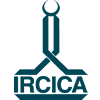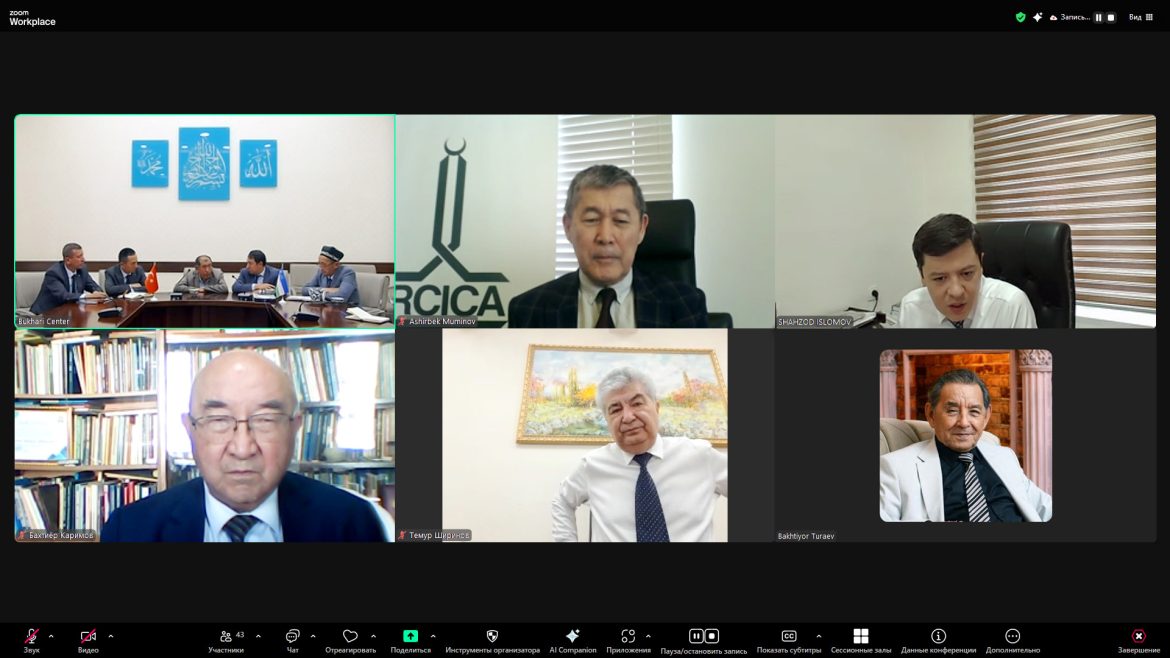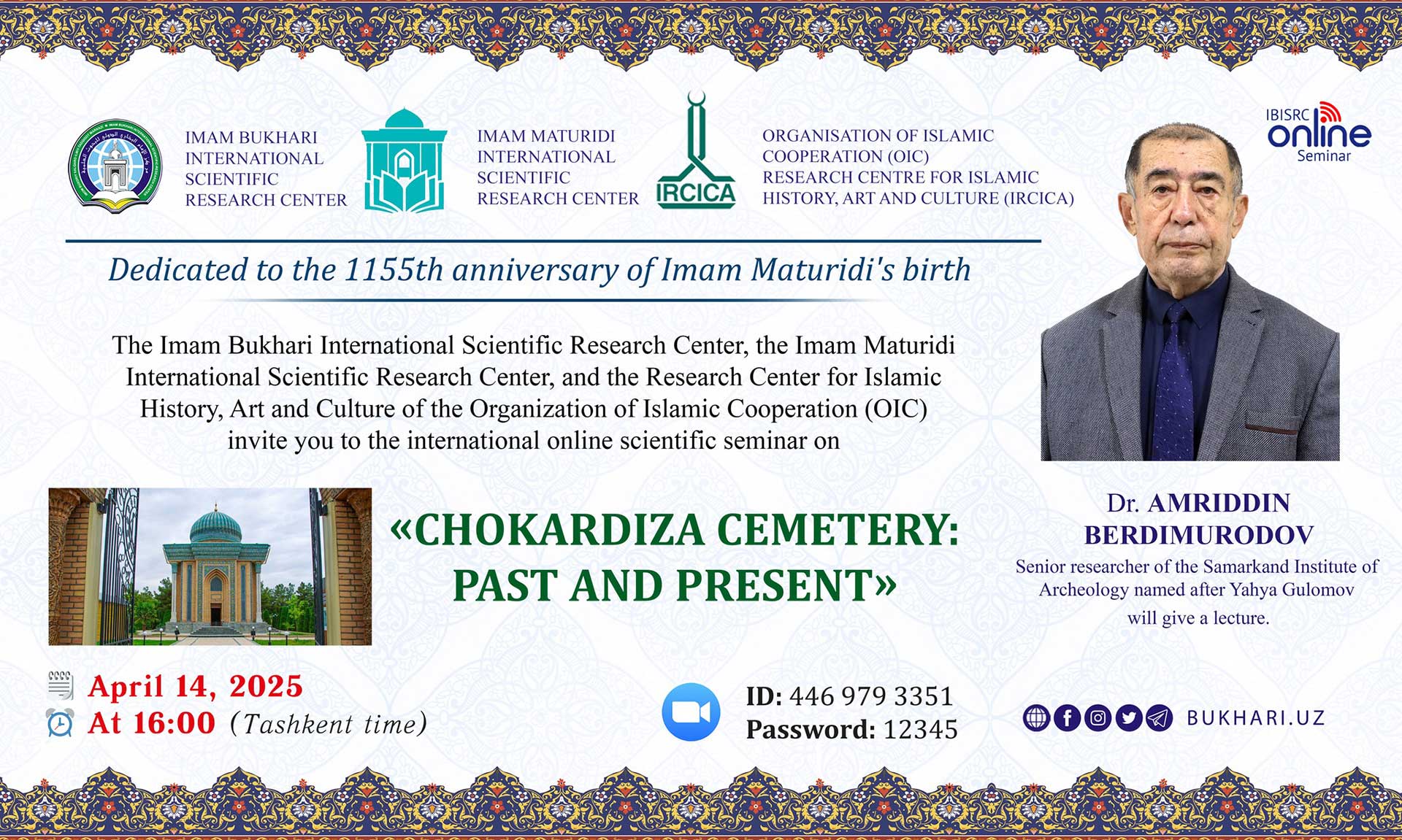On the occasion of the 1155th Birth Anniversary of the great 10th-century Islamic scholar Imam Maturidi, a program was organized by Imam Bukhari International Scientific Research Center (Samarkand, Uzbekistan), Imam Maturidi International Scientific Research Center (Tashkent, Uzbekistan) and IRCICA on 14 April 2025, within the framework of the joint series of online seminars. The program consisted of a lecture and discussion on “Chokardiza Cemetery: Past and Present”. The lecture was delivered by Dr. Amriddin Berdimurodov, Senior Researcher at the Samarkand Institute of Archaeology named after Yahya Ghulamov. The program was conducted with the active participation of Prof. Shovosil Ziyadov, Director of Imam Bukhari Center, and Prof. Ashirbek Muminov, Advisor to the Director General of IRCICA on International relations. Dr. Berdimuradov communicated information and experiences relating to the studies and excavations conducted and materials assembled at the mausoleum of Imam Maturidi in the Chokardiza Cemetery.
Abu Mansur Muhammad b. Muhammad b. Mahmud al-Maturidi as-Samarqandi (d. 333 AH/944-945 CE) is one of the most important representatives of the Hanafi school. He wrote around fifteen major works, the most well-known of them being Kitab al-Tawhid (al-Maturidi) and Ta’wilat Ahl al-Sunna (Tafsir al-Maturidi). He won wide recognition and succession throughout the Muslim world. Conforming to his wish, he was buried in the Chokardiza Cemetery, one of the most well-known cemeteries of the Muslim world, where 239 Islamic scholars who lived from the 10th to 14th centuries are laid to rest. The history of the cemetery involves two major periods of preservation, reconstruction and maintenance before the present period. The first was that of the Karakhanid State (999-1211 CE) when the graveyard was embellished and its inscriptions renovated; the second period was that of the Timurid State (1370-1506 CE), when its construction materials were converted to marble, and other maintenance works carried. The cemetery’s monuments gradually disappeared during the 20th century, as its land partly came under settlement areas. Subsequently, the lands were recovered, excavations and reconstructions carried out by the Government of the Republic of Uzbekistan. As the first stage of the reconstruction, the tomb structure of al-Maturidi was reconstructed in conformity with the original building; damaged tombs were repaired; the place was opened for visits in November 2000. Some of the recovered original gravestones with detailed inscriptions are preserved inside the mausoleum, aligned to encircle al-Maturidi’s tomb. The second stage of reconstruction and reopening of the complex to be carried out by the Government will be related to the mosque, madrasa, and museum. The importance of the mausoleum as an ensemble of spiritual, scholarly, epigraphic, artisanal and architectural heritage is highlighted in IRCICA’s publication titled Epitaphs of Muslim Scholars in Samarkand (10th–14th Centuries), edited by Bakhtiyar Babadjanov, Lola Dodkhudoeva, Аshirbek Muminov, and Ulrich Rudolph (IRCICA, 2019, Studies and Sources on Islamic Civilization Series 39, 652 p.). The publication contains the texts in Arabic script of the 239 epitaphs with their translations into Russian, photographs, informative annotations, together with detailed scholarly indices, a glossary and a bibliography.






